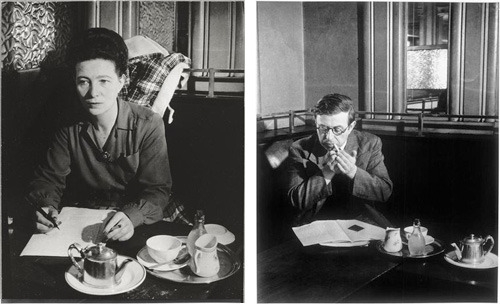An historical landmark in Paris since 1890, this cafe was a favorite of many great 19th-century writers and artists. French philosopher Jean-Paul Sartre always took his coffee and croissant on the terrace.
These days you can drop in for a quick snack or glass of Champagne having shopped-till-you-dropped in the district's luxurious boutiques. The smart set that revels in the cafe's upmarket style insures that its reputation lives on.
Towards 1913, Apollinaire besieged the place. With Salmon, they transformed the first floor into a newspaper office: « les soirées de Paris » (Paris evenings), a review, was born.

The Cafe in the middle of 1920s.
The war didn’t change anything concerning the great poet’s habits, the Café was his office and he received people at fixed times. And, on a Spring day in 1917, he presented Philippe Soupault to André Breton. Later, by provoking the meeting between these two young poets with Aragon, Apollinaire laid the foundations of the dadaist movement.

Simone de Beauvoir, 1944. Jean-Paul Sartre, 1945 at the Cafe. By Brassai.
In the same year, he coined the word « surrealism ». When Tristan Tzara arrived in Paris, his dadaist friends made him visit the Café because Apollinaire had lived and died there (in 1918).

In 1922, the editorial staff of the erudite review « Le Divan » regularly gathered on the Café’s benches.


Cafe de Flore
172 Boulevard Saint-Germain 75006 Paris, France





